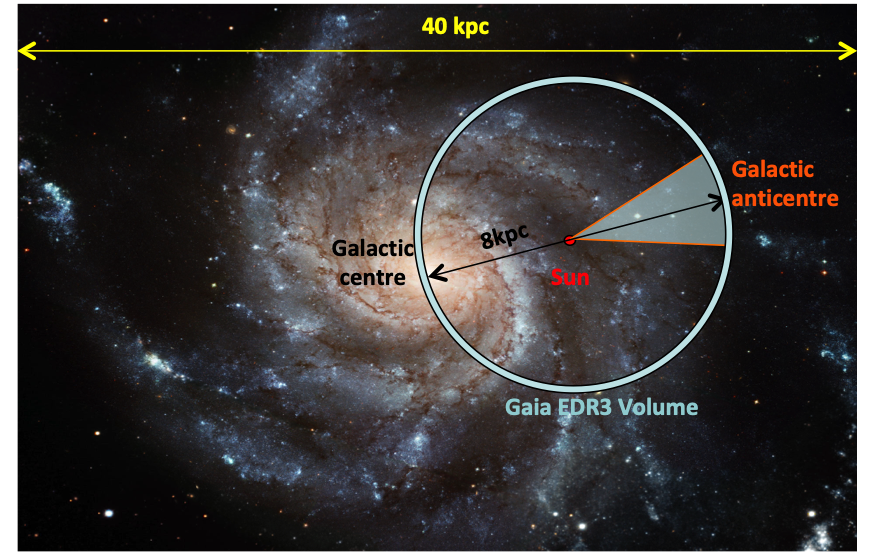This study, published in Astronomy and Astrophysics journal, has used the kinematic data from the Gaia Second Data Release, a satellite of the European Space Agency, where in addition to the positions of 1.7 billion stars, includes data on the distance, motion and colour of more than 1.3 billion stars in the Milky Way and nearby galaxies. Researchers have been able to clearly observe the galactic anticentre where two structures in the galaxy's outer disk are located, called Anticenter Stream (ACS) and Galactic anticenter stellar structure (GASS, also known as Monoceros), which are the most prominent structures in the distant sky after the Magellanic Clouds and Sagittarius.
“The new data from the Gaia satellite show us in exquisite detail the disorder that reigns in the outermost parts of the Galaxy, opening the possibility of establishing the causal connection between these distant structures and the structures we observe near the Sun.”, explains the researcher Pau Ramos from the Institute of Cosmos Sciences of the University of Barcelona.
Researchers have been able to confirm that the two structures, ACS and GASS, must be part of the Milky Way disk. This conclusion involves continuing with these phenomena modelling and extracting all the information to build the theoretical framework.
The goal of the researchers is to form a coherent and unified image of the outer disk of the galaxy, to which the long-awaited Gaia Third Data Release will contribute. The improvement in the astrometric accuracy, as well as an increased number of stars observed, especially the faintest, and radial velocities will allow us to probe the galactic anticenter like never before and thus advance in the understanding of the history of the Milky Way. There are also other important catalogues in the field, such as SDSS-V, Subaru Prime Focus Spectrograph or WEAVE that will provide much more information about the region and will allow drawing a more accurate and clear picture of the outer disk of our galaxy.
Participation of the Barcelona team
The ICCUB team (UB-IEEC), led by Professor Carme Jordi and professors Xavier Luri and Francesca Figueras, from the Department of Quantum Physics and Astrophysics, has participated in the Gaia mission from the beginning. Their role was focused on the scientific and technological design of the project, the development of the data processing system and the production of simulated data.
Regarding the now presented data, the Barcelona team coordinates the group that has developed the archive of the mission. It is also responsible for running several key processes for processing the data that arrives daily from the satellite, the first step in obtaining results for scientific use such as those now published. The group is also responsible for the process of pairing the various observations of the same star, and it collaborates in the calibration of star photometry and is fully involved in the scientific exploitation of the data. Finally, the Catalan researchers have played an important role in the performance verification papers, articles that are published together with the data and which verify their quality. Specifically, they have led four of these articles and have played a significant part in much of the rest.
The ICCUB Gaia team (UB-IEEC), made up of about thirty scientists and engineers, was awarded the 2013 City of Barcelona Award for Experimental Sciences and Technology. It is part of the Gaia Data Processing and Analysis Consortium, made up of more than 400 people from around twenty European countries, and leads the creation of the archive of the mission. Some of its members are part of the Gaia Science Team (GST), the ESA scientific advisory body.
Article reference
P. Ramos, T. Antoja, C. Mateu, F. Anders, C.F.P. Laporte, J.A. Carballo-Bello, B. Famaey, R. Ibata. «The outer disc in shambles: blind detection of monoceros and the acs with gaia's astrometric sample». Astronomy & Astrophysics, February 2021.




